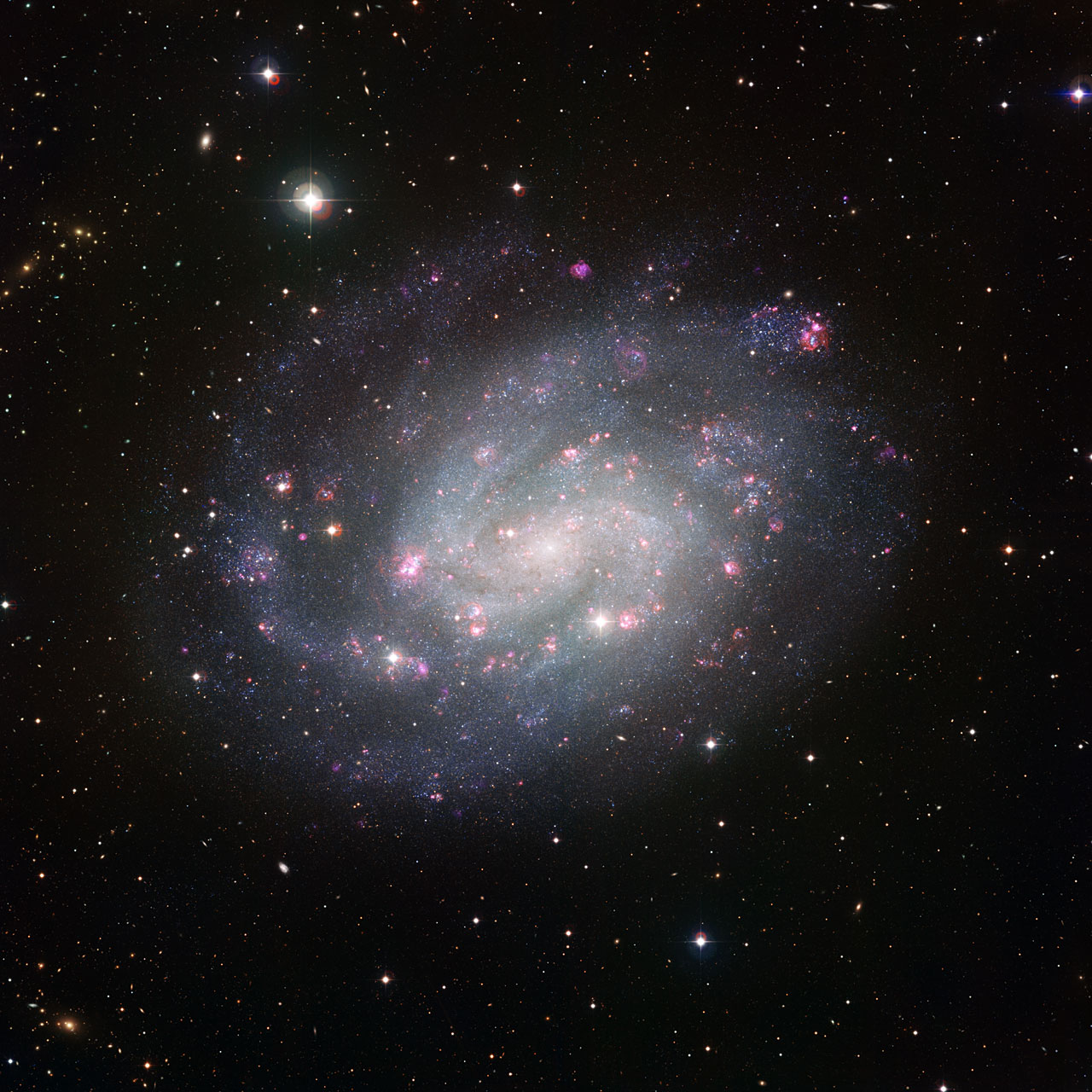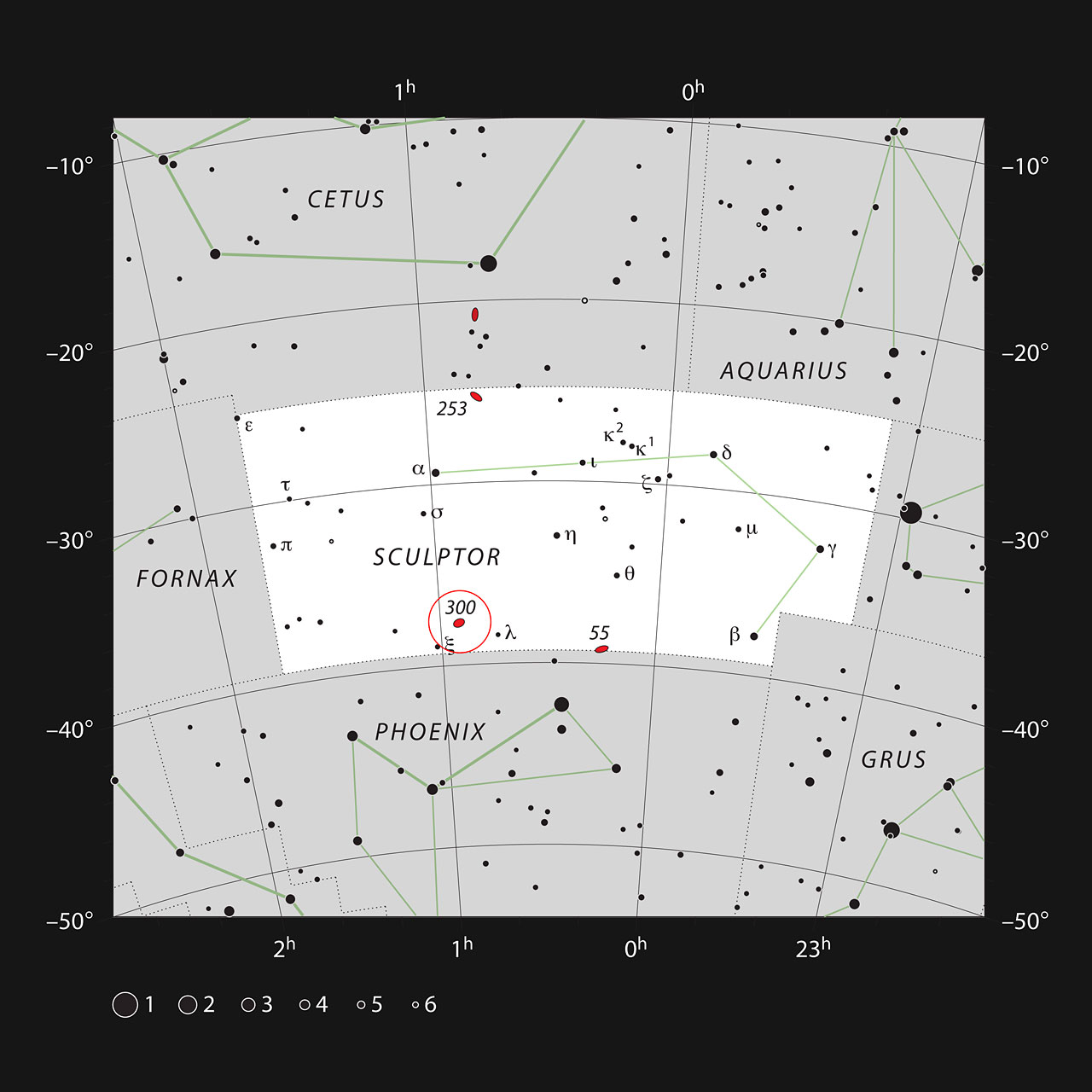Compared to other galaxies, NGC 300 is remarkably normal, making it an ideal specimen for astronomers studying the structure and content of spiral galaxies such as our own.
ESO has released a spectacular new image of NGC 300 taken with the Wide Field Imager (WFI) at ESO’s La Silla Observatory in Chile. It is a 50-hour exposure and reveals the structure of the galaxy in exquisite detail.

CLICK TO ENLARGE. The images were mostly taken through filters that transmit red, green or blue light. These were supplemented by images through special filters that allow through only the light from ionised hydrogen or oxygen gas and highlight the glowing clouds in the galaxy’s spiral arms. The total exposure time amounted to around 50 hours. Credit: ESO
NGC 300 was originally discovered from Australia by the Scottish astronomer James Dunlop early in the nineteenth century. Since then, NGC 300 has been the source of many interesting astronomical phenomena, such as the most distant and among the most massive stellar-mass black holes yet found in this galaxy, as the partner of a hot and luminous Wolf–Rayet star in a binary systemn and that NGC 300 and another galaxy, NGC 55, are slowly spinning around and towards each other, in the early stages of a lengthy merging process.
This picture from the Wide Field Imager (WFI) at ESO’s La Silla Observatory in Chile was assembled from many individual images taken through a large set of different filters with a total exposure time close to 50 hours. The data was acquired over many observing nights, spanning several years. The main purpose of this extensive observational campaign was to take an unusually thorough census of the stars in the galaxy, counting both the number and varieties of the stars, and marking regions, or even individual stars, that warrant deeper and more focused investigation.
This zoom sequence starts with a view of part of the faint southern constellation of Sculptor. At the center is spiral galaxy NGC 300, lying about six million light-years away. The zoom finishes with a close-up of NGC 300 in a very detailed image from the Wide Field Imager (WFI) at ESO’s La Silla Observatory in Chile. Credit: ESO
By observing the galaxy with filters that isolate the light coming specifically from hydrogen and oxygen, the many star-forming regions along NGC 300’s spiral arms are shown with particular clarity in this image as red and pink clouds. With its huge field of view, 34 x 34 arcminutes, similar to the apparent size of the full Moon in the sky, the WFI is an ideal tool for astronomers to study large objects such as NGC 300.

CLICK TO ENLARGE. NGC 300 galaxy within the constellation of Sculptor. This map shows most of the stars visible to the unaided eye under good conditions and the galaxy itself is marked as a red oval in a circle at the left (labelled 300 for NGC 300). This galaxy is fairly bright and is bright enough to be seen easily in binoculars. Credit: ESO, IAU and Sky&Telescope






Comments